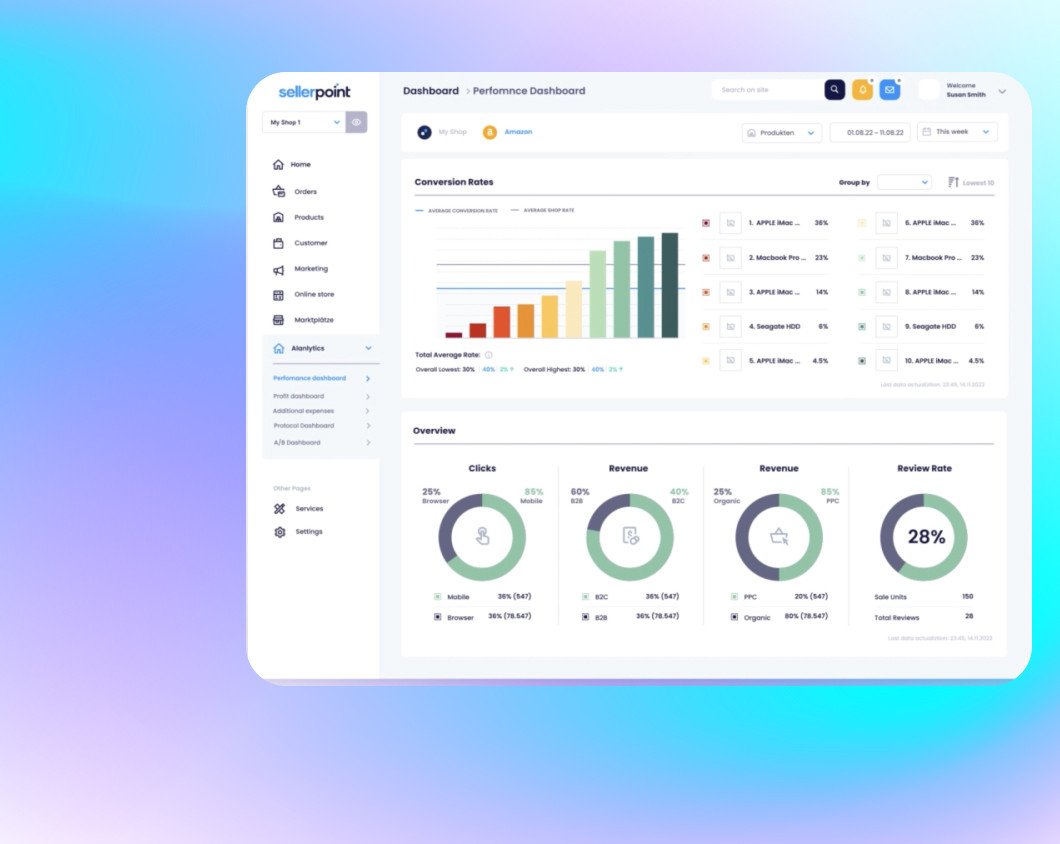EXCELLENCE IN TECHNOLOGY
We provide research and implementation of emerging technologies and strategies that help our clients get a competitive advantage. Tap into our technical expertise to gain benefits for your specific business needs.

We develop and create scalable and high-performance software solutions. Using our technology expertise and cross-industry experience, we convert digital transformation into profit acceleration.
Design, develop, and improve your software systems with our leading specialists. Broad expertise and extensive experience of CPI Tech experts will ensure your enterprise gets scalable and easily maintainable software architectures.

We provide research and implementation of emerging technologies and strategies that help our clients get a competitive advantage. Tap into our technical expertise to gain benefits for your specific business needs.
Modern solutions that produce results should not only help you monitor, manage, and connect, but they should also be cost-effective and high-performance to compete in the market. High-performance solutions add the most value to your company.
Our experienced development team, which includes skilled data engineers and machine learning specialists, will devise the best set of scientific models to power your intelligent algorithms. With integrated AI and ML models, you can give your digital platform solutions a competitive advantage.
Make use of our extensive platform engineering expertise with various cloud computing platforms, vendors, and services. We create genuinely exceptional and sophisticated SaaS applications and platforms that will disrupt your industry.
Software development is the process of creating, designing, programming, testing, and maintaining software that meets the requirements of users and clients. It involves the collaboration between several specialists or teams, which may result in significant expenses, as in any other business venture. Depending on the project and your requirements, you can align software to your budget not only by choosing a more affordable team or cutting down some features but also by choosing between white-label or custom enterprise software development.
Another factor to consider is methodology. Different teams may employ different approaches to software development (not only on the main basis but from project to project). Generally, developers stick to one of these four methodologies:
Waterfall: It's a methodology that follows a fixed sequence of stages, with each phase building upon the previous one. Once a phase is completed, the team moves on to the next and doesn't revisit earlier stages. Waterfall is known for its structured and well-documented nature, yet it may face challenges adapting to changes.
Agile: Agile focuses on small, incremental releases of a product in short timeframes called iterations or sprints. It's responsive to feedback and changing requirements throughout the development process. Scrum and Kanban are popular frameworks within the Agile methodology.
RAD: Rapid Application Development (RAD) prioritizes quick prototyping and iterative feedback over extensive planning and testing. It's meant to accelerate the development process and rapidly deliver a functional product to users. RAD is particularly suitable for projects where requirements are likely to change or evolve, which makes it suitable custom software development for startups.
DevOps: Although DevOps is rather a set of practices, it's still somewhat considered a software development methodology. It seeks to reduce the time and friction between code development and its deployment into production, fostering a culture of collaboration and continuous delivery. It often involves the use of tools for automation, monitoring, and gathering feedback to achieve faster and more reliable software delivery.
As software can help companies expand their services or enhance products' functionality, its pivotal role in solving business challenges, generating revenue, and building meaningful customer relationships can't be overstated. We recommend researching your business and highlighting zones where software can uncover the untapped potential.
Agile software development is a set of principles and practices for software development that prioritize flexibility, collaboration, and customer satisfaction. It emerged as a response to the limitations of traditional, plan-driven development methodologies like Waterfall.
Popular frameworks within the Agile methodology include Scrum, Kanban, and Extreme Programming (XP), each providing specific guidelines and practices for implementing Agile principles. Agile has become widely adopted in the software development industry and beyond, with its principles applied in various domains for managing complex projects with changing requirements. However, as with any methodology, Agile has its own pros and cons:
Pros:
Adaptable to evolving clients’ needs and market conditions.
Results closely aligned with the expectations of users and the client.
Continuous and consistent progress through iterative cycles (sprints).
Faster time-to-market compared to traditional methodologies.
Reduced risk of failure for small, medium, and even large projects.
Increased efficiency and effectiveness of development.
Issues are identified and addressed early in the process.
Cons:
Unpredictable scope, time, and cost of the project.
Dependency on frequent collaboration with clients, stakeholders, and customers.
Regular meetings and ceremonies consume significant time for team members.
Insufficient documentation for future reference or new teams.
Potential for Scope Creep, when changes are introduced without proper evaluation of their impact on timelines and resources.
Dependent on the skills and expertise of specialists.
The Software Development Life Cycle, also known as SDLC, is a highly systematic framework software developers use to plan, design, build, test, deploy, and maintain software systems. Providing a methodical approach to software development guarantees that the end result satisfies the client's requirements, adheres to project deadlines, and stays within budget. The SDLC typically encompasses several stages, each with its own activities and deliverables. While specific models may differ, the fundamental phases of the SDLC generally include:
Gathering and documenting information about projects, users, and clients' requirements.
Creating an architecture and design for the software.
Translating the specifications outlined in the design phase into actual code.
Testing the software to ensure that it meets the specified requirements and functions correctly, as well as to fix defects.
Releasing the software to the market or within your company.
Providing ongoing support through updates, patches, and fixes.
There are different SDLC models, and organizations may choose the one that best fits their project requirements and objectives. Common SDLC models are:
Waterfall.
Agile.
V-Model.
Each model has its advantages and drawbacks, and the choice depends on factors such as project size, complexity, and the level of flexibility required.
The duration of a project's development can vary significantly based on factors like the scope of work, complexity, methodology, and expertise of the team. More intricate custom projects generally take longer to develop, while simple or typical platforms with limited functionality can be deployed in less than several months. In addition, choosing the wrong development methodology can significantly delay the delivery of your software and lead to unplanned expenses.
That's why we encourage you to contact the team you're interested in and spend some time defining your milestones, requirements, and vision. For instance, at CPI Tech, we first organize personal calls to become familiar with your project and estimate deadlines for the best and worst-case scenarios. Our team also explains what options you have and how they affect results. This way, we can minimize the consequences of potential setbacks or avoid them altogether.
Still, we want to remind you that project timelines are just estimates, and unforeseen challenges can cause delays. Regular communication, monitoring, and adaptation are critical for successful project management. Your company may want to break down large projects into shorter phases to provide more accurate estimations and deliver value incrementally.
Custom software development pricing greatly varies depending on numerous factors. Complexity, expertise of your teams, technologies involved, scope of work, and many more. Even just choosing a methodology already sets some expectations. For example, the waterfall will ensure that there will be no endless fixes, while agile, although it allows you to polish your project to perfection, may take more resources than you first expect.
To obtain an accurate cost estimate, schedule a call with our team. We will discuss detailed project requirements and suggest the most suitable approach. At CPI Tech, we offer both custom and white-label development, allowing your team to tailor services that suit enterprises without fixed budgets and any startup with budgetary constraints.
Custom software product development is worth the investment if it aligns closely with the business goals and requirements. Tailoring the software to meet specific needs can provide a competitive advantage and support organizational objectives. It's particularly beneficial for businesses that plan to expand operations, improve services, or optimize processes, as software has a variety of valuable use cases regardless of the industry or your business model.
The question should be, "How do you implement software to get the most benefits out of this venture?" We suggest consulting professionals. For example, our team at CPI Tech can help you define key goals, needs, and requirements, as well as suggest potential solutions. This way, you'll be able to make a well-informed decision.
The choice of a cooperation model for custom development services depends on the specific needs, goals, and preferences of both the client and the development service provider. Nonetheless, there are several commonly used models:
Fixed-Price Model: the project scope, timeline, and cost are defined upfront in a detailed agreement. The client pays a predetermined amount for the entire project.
Advantages:
Predictable costs.
Clear project scope and deliverables.
Well-suited for projects with well-defined requirements.
Disadvantages:
Limited flexibility for changes once the project has started.
Possible challenges if the project needs changes.
Time and Materials (T&M) Model: The client pays for the actual time and resources spent on the project. This model is more flexible, allowing for changes to the project scope during development.
Advantages:
Adaptable to changing requirements.
Continuous collaboration between the client and the development team.
Suitable for projects with growing or unclear requirements.
Disadvantages:
Cost may be unpredictable.
Requires active client involvement in project management.
Dedicated Team Model: The client forms a dedicated team with the development service provider. This team works exclusively on the client's projects, and the client has more control over project management.
Advantages:
Clients have a high level of control and involvement.
Flexible resource allocation and scaling.
Well-suited for long-term projects or ongoing development needs.
Disadvantages:
Requires effective communication and collaboration.
Ongoing engagement and commitment from both parties.
Fixed-Price with Iterations (Agile Fixed-Price): The project is divided into iterations, allowing for flexibility in adapting to changing requirements.
Advantages:
Adaptable to changes during development.
Allows for incremental and iterative delivery of features.
Clear milestones and deliverables.
Disadvantages:
May still have limitations in accommodating significant changes.
Requires active client involvement and feedback during iterations.
Build-Operate-Transfer (BOT) Model: Initially, the development service provider builds and operates the project. After a certain period, the ownership and operation can be transferred to the client.
Advantages:
Allows the client to focus on core business activities initially.
Smooth transition of ownership over time.
Well-suited for establishing offshore development centers.
Disadvantages:
Requires clear legal agreements and planning for the transfer phase.
Involves a long-term commitment and strategic partnership.
Different cooperation models offer varying levels of control, flexibility, and engagement. Often, a tailored approach or a combination of models may be the best fit for a specific project or engagement. However, there is no ultimate solution that would suit any case.
Custom business software development offers several advantages compared to other approaches:
Tailored to precisely fit your business, workflow, and objectives.
Scalable solutions that can be adjusted to the growth of your organization or demand.
Compatible with existing infrastructure to seamlessly integrate or scale with any tech your organization uses.
Enhanced security based on robust security measures tailored to your circumstances.
Flexible solutions that adapt to changing business requirements.
Complete control over results and quality of the source code, updates, and enhancements.
Ongoing support that keeps your software up-to-date, secure, and compatible with evolving technologies.


Gain access to an in-depth guide on platform development from the industry-hardened CPI Tech specialists. Don’t let anything hinder your success!

All-in-one platform for simplifying business management in ecommerce.

A modern app for trading, exchanging, and shipping gold, silver, platinum, and other precious metals.

Our white-label tokenization platform that simplifies investment and fundraising processes for SMEs, startups, and large enterprises.

Software interface network and a smart contract system for a decentralised social network.

Schedule a free consultation today and find out exactly how we can turn your vision into a powerful project that will storm into the market.